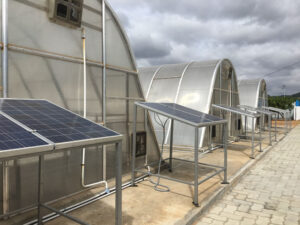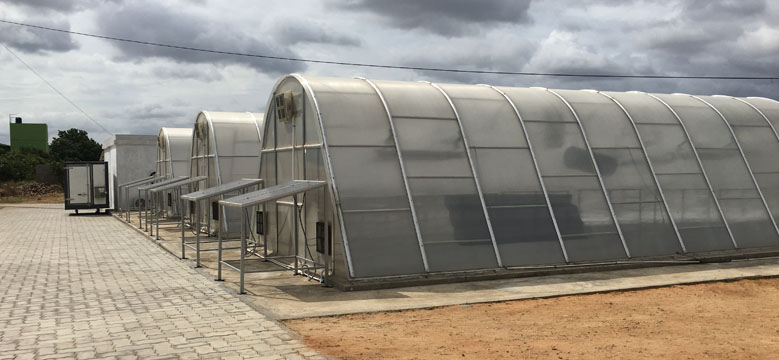An entire community of 70 farmers in Tamil Nadu’s Krishnagiri have found an additional source of revenue. The mango farming communities have acquired solar dryers which will empower them to tap demand for dry resins in both domestic and international markets.
India’s ranking in terms of food security is not on par with its status of being one of the biggest producers of vegetables. According to a research, it produces 220 million tons of vegetables and fruits in a year but about 30% of the production never reaches the table and the main reason for this waste is a lack of storage infrastructure, particularly at harvest-time. To support the farmers, Covestro along with Vivunes, an organisation based at Chennai, recently executed project for drying of multi-fruit bar which comprises of six units of green house solar dryers for MCI Agro Industries-Krishnagiri.
A fruit park has been established thus, helping the farmer community in Krishnagiri to reduce wastage of fruits especially mango due to weak demands or weather related delays. Many food preservation techniques like cold storage, drying, etc., have been evolved over the years to tackle the losses. The major constraint is that almost all the technologies utilise fossil fuel resources, which are depleting very fast, and wise use of these precious resources are preferred for long-term energy sustainability.
“Weather, weak demands, logistical issues, long credit periods and low shelf-life have been key issues plaguing the farming community for long. Despite good harvest we have seen our produce facing a risk of spoilage. Therefore, we wanted to use dryers which will not just help us sell the fruit bars and fruits in market but also provide an entrepreneurial opportunity for women of our community,” said Sathiya Moorthy, one of the farmers.
“India is a fast growing country and has the second largest population with agriculture being the source of income to nearly 60 % of the total population. Still, post-harvest and storage loss is a major difficulty that needs to be addressed meticulously. Food preservation methods such as solar drying help in reducing food insecurity among farmer communities and will help in boosting the economy by supporting them with additional revenue source,” said Richard Northcote, Chief Sustainability Officer, Covestro AG.
 While highlighting the impact of greenhouse solar dryer on agri-horticultural sector with Covestro technology, AP Prabhakar, Chief Executive of Vivunes, said that the technology is proving to be an effective solution for commercial scale drying with not much of skills required from farmers to achieve desirable standards. The technology will find extensive application shortly with pan India presence owing to its vantage on usage of renewable energy and on current market acceptance of the produce dried with the same technology.
While highlighting the impact of greenhouse solar dryer on agri-horticultural sector with Covestro technology, AP Prabhakar, Chief Executive of Vivunes, said that the technology is proving to be an effective solution for commercial scale drying with not much of skills required from farmers to achieve desirable standards. The technology will find extensive application shortly with pan India presence owing to its vantage on usage of renewable energy and on current market acceptance of the produce dried with the same technology.
The greenhouse solar dryer technology is ideal to break the boundaries and barriers on post harvest realisation of fruits and vegetables, manage excessive yields of seasonal crops and to enhance its value adding proposition. With the collaborative approach, this mission could contribute to the upliftment of farming community, which could also serve as an eye opener for effective realisation of farmers produce.
Sustainable methods for food preservation are the need of the hour and in India, solar drying is one of the most preferred choices and a promising technology owing to its vantage on utilisation of renewable energy. This initiative will enable farming communities to build more sustainable business and also contribute to the development of agricultural sector in India.
Regards,
The CSR Journal Team
Subscribe


